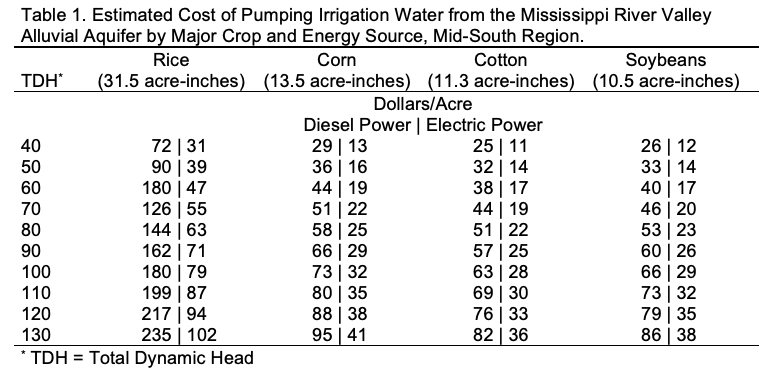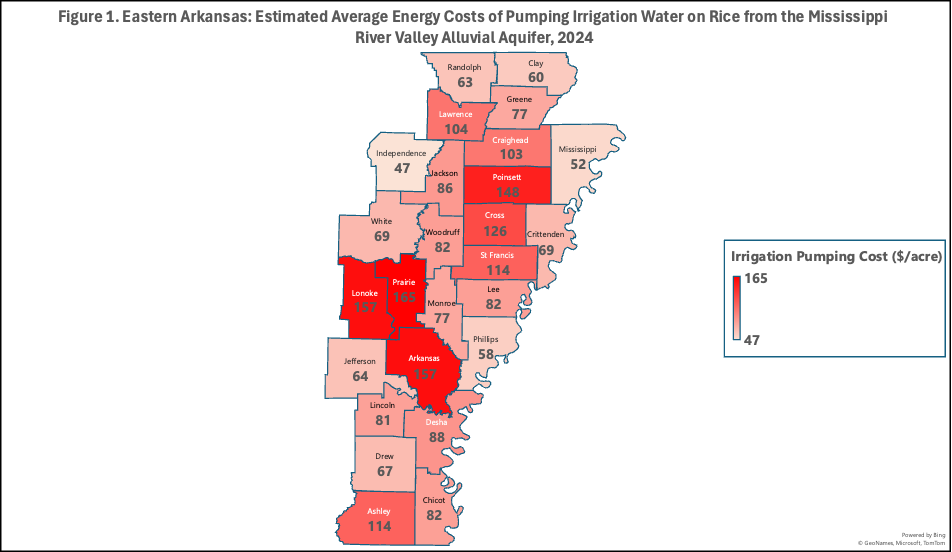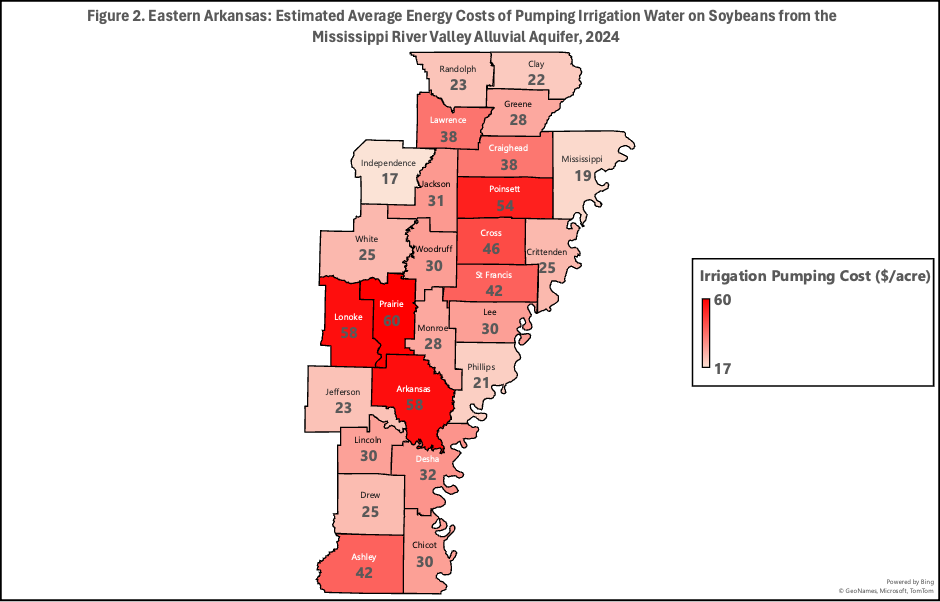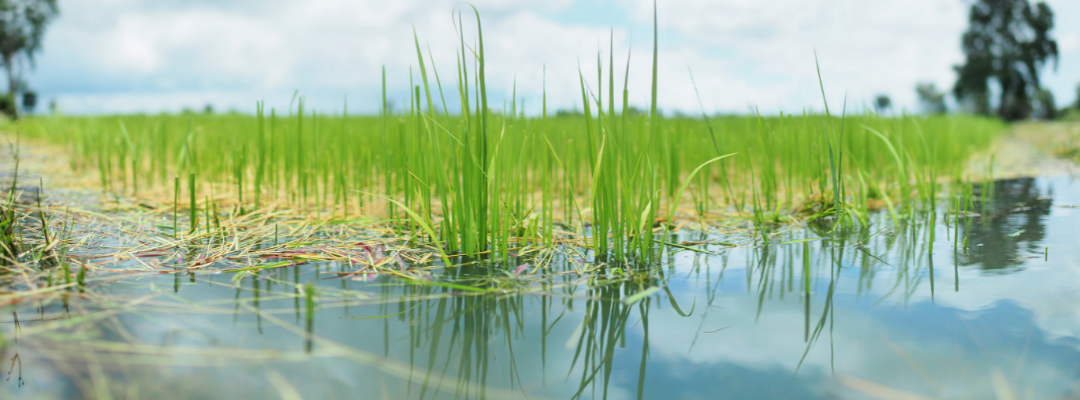Irrigation water is a significant resource for row crop agriculture in the Mid-South (Eastern Arkansas, Northeastern Louisiana, Northwestern Mississippi, and Southeastern Missouri). The primary crops grown in the region are rice, soybeans, cotton, and corn. All rice acres and most soybean, corn, and cotton acres in the region are irrigated. The region’s primary irrigation source is groundwater pumped from the Mississippi River Valley alluvial aquifer (MRVAA) (Massey et al., 2017). Pumping costs vary greatly throughout the region depending on the crop grown, the mode of power used to pump the water, and the pumping depth of water. This article looks more closely at the range of pumping costs for the Mid-South.
Table 1 presents the estimated costs per acre of pumping irrigation water for the four major crops grown in the Mid-South by energy source (diesel, electric) and by total dynamic head (TDH) (depth to water plus drawdown and discharge pressure). Crop irrigation amounts (acre-inches) represent average amounts reported for each crop in enterprise budgets from both the University of Arkansas and Mississippi State University. A diesel price of $3.54/gallon is used to calculate diesel pumping costs, while an electric price of $0.138/kWh is used to calculate electric pumping costs. The amount of diesel and electric energy used to pump irrigation water for a given TDH is based on irrigation energy consumption data for alluvial wells from McDougal (2015).
Diesel power is currently more expensive than electric power. Farmers in the region have switched many of their diesel irrigation motors to electric motors because of the lower cost of electricity, but diesel is still prevalent due to the expense of running electricity to fields located far from electric utility lines. The proportion of diesel to electric pumps can vary greatly by farm in the region.
Pumping costs can vary greatly depending on geographic location and groundwater availability. To demonstrate this, Figures 1 and 2 present estimated average pumping costs per acre for rice and soybeans by county in Eastern Arkansas. Estimated average pumping costs in these figures assume half diesel and half electric power and are calculated using depth-to-water data from the Arkansas Groundwater Protection and Management Report for 2023 (Arkansas Department of Agriculture, NRD, 2024). Average depth-to-water values for each county are adjusted upward to TDH by adding 28 feet to account for drawdown and discharge pressure (Chris Henry, University of Arkansas Water Management Engineer, personal communication). Counties with a darker shade of red in both figures have the highest average pumping costs. Groundwater is more limiting for these counties relative to counties where water is more plentiful (counties with a lighter shade of red). Less groundwater translates into deeper pumping depths, making irrigation water more expensive in locations where water is more limiting.



References and Resources
Arkansas Department of Agriculture, Natural Resources Division (2024). Arkansas Groundwater Protection and Management Report 2023. https://www.agriculture.arkansas.gov/wp-content/uploads/2023-Groundwater-Report-Final.pdf
McDougall, W. M. (2015). A Pump Monitoring Approach to Irrigation Pumping Plant Performance Testing. Graduate Theses and Dissertations Retrieved from https://scholarworks.uark.edu/etd/1146
Massey, J.H., C.M. Stiles, J.W. Epting, R.S. Powers, D.B. Kelley, T.H. Bowling, C.L. Janes, and D.A. Pennington (2017). Long-Term Measurements of Agronomic Crop Irrigation Made in the Mississippi Delta Portion of the Lower Mississippi River Valley. Irrigation Science. 35:297-313.
Watkins, Brad. “Irrigation Water Pumping Costs in the Mid-South.” Southern Ag Today 4(36.3). September 4, 2024. Permalink

Leave a Reply